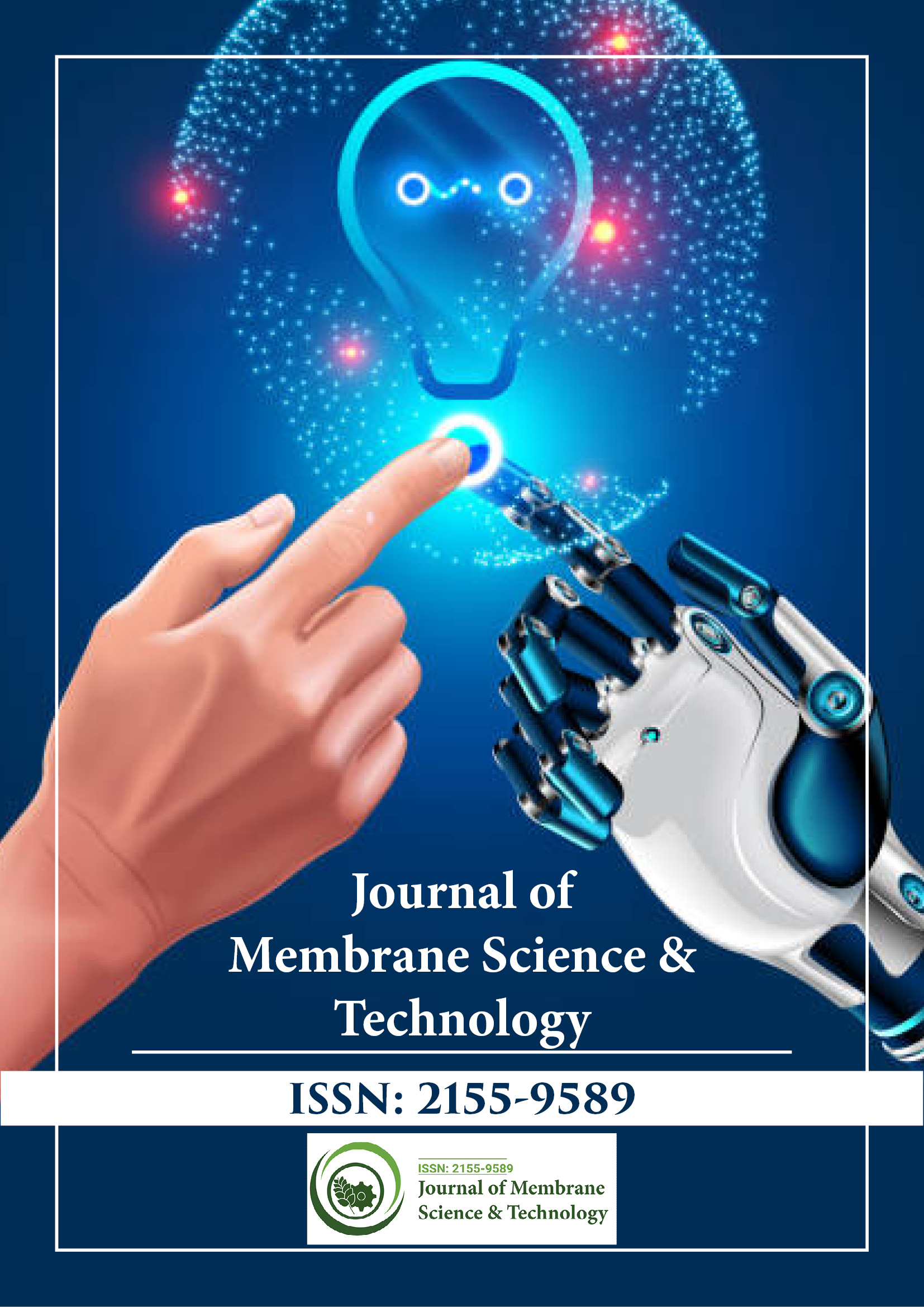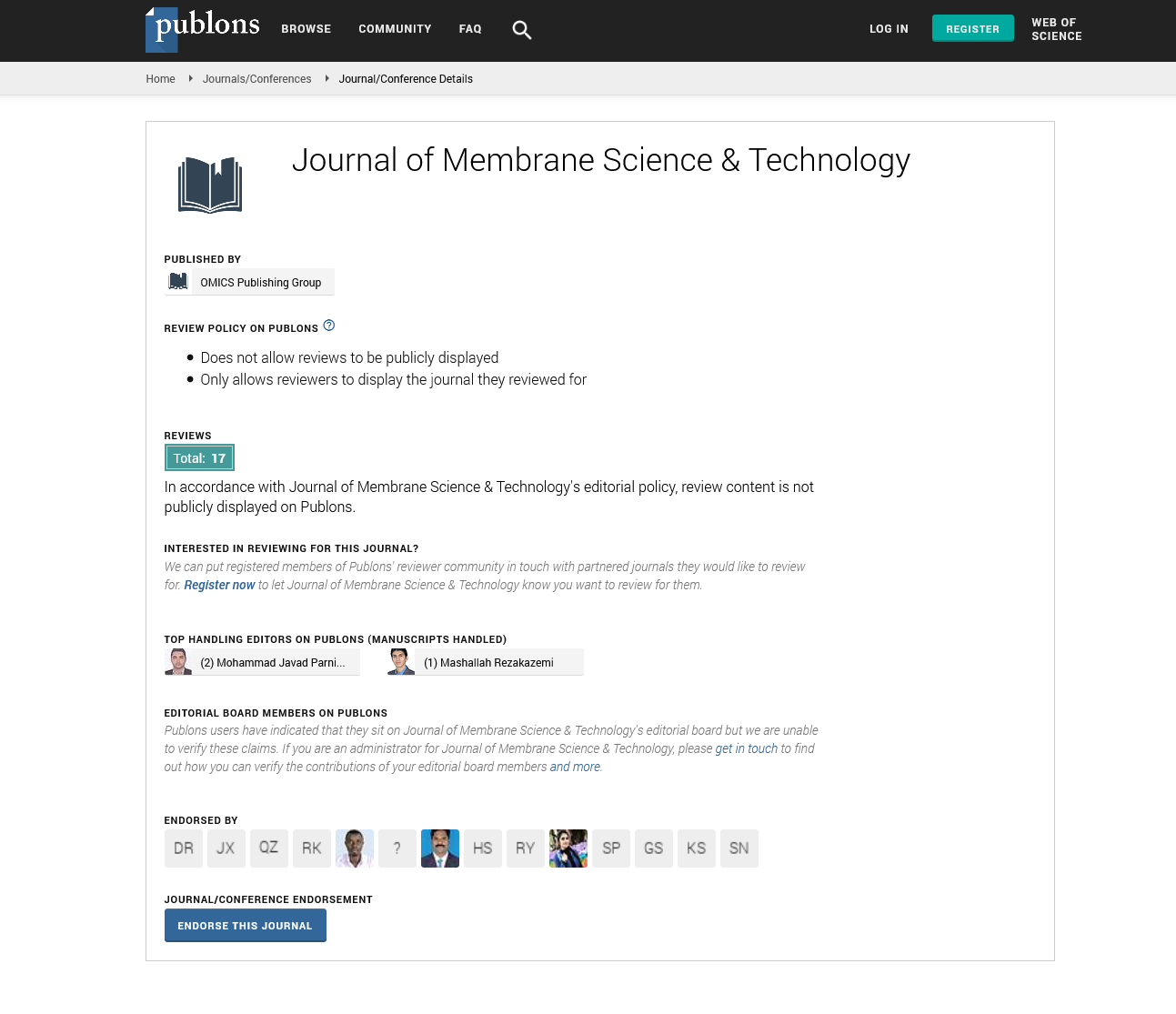Indexed In
- Open J Gate
- Genamics JournalSeek
- Ulrich's Periodicals Directory
- RefSeek
- Directory of Research Journal Indexing (DRJI)
- Hamdard University
- EBSCO A-Z
- OCLC- WorldCat
- Proquest Summons
- Scholarsteer
- Publons
- Geneva Foundation for Medical Education and Research
- Euro Pub
- Google Scholar
Useful Links
Share This Page
Journal Flyer

Open Access Journals
- Agri and Aquaculture
- Biochemistry
- Bioinformatics & Systems Biology
- Business & Management
- Chemistry
- Clinical Sciences
- Engineering
- Food & Nutrition
- General Science
- Genetics & Molecular Biology
- Immunology & Microbiology
- Medical Sciences
- Neuroscience & Psychology
- Nursing & Health Care
- Pharmaceutical Sciences
Perspective - (2025) Volume 15, Issue 2
Advanced Drug Delivery Systems for Targeted Therapeutics and Controlled Release Mechanisms
Vinoth Kumar*Received: 30-Apr-2025, Manuscript No. JMST-25-29446; Editor assigned: 02-May-2025, Pre QC No. JMST-25-29446; Reviewed: 16-May-2025, QC No. JMST-25-29446; Revised: 23-May-2025, Manuscript No. JMST-25-29446; Published: 30-May-2025, DOI: 10.35248/2155-9589.25.15.428
Description
Drug delivery is a critical aspect of modern medicine, encompassing the methods and technologies used to transport pharmaceutical compounds to specific sites in the body for optimal therapeutic effect. Traditional drug administration methods such as oral tablets, injections, or topical applications often lack precision, resulting in suboptimal efficacy, increased side effects, or reduced patient compliance. Advances in drug delivery systems have aimed to overcome these limitations by developing strategies that improve bioavailability, target specificity and controlled release, ultimately enhancing the safety and effectiveness of therapeutic interventions.
One of the primary goals in drug delivery is to ensure that an Active Pharmaceutical Ingredient (API) reaches its intended site of action at the right concentration and duration. Achieving this goal requires navigating numerous physiological barriers such as enzymatic degradation, low solubility, rapid clearance, or poor membrane permeability. These challenges have prompted the development of delivery vehicles and systems designed to protect drugs during transit, facilitate absorption and maintain therapeutic levels over time.
Controlled release formulations are among the most widely used innovations in drug delivery. These systems release the drug gradually over a period of hours, days, or even weeks, reducing dosing frequency and improving patient adherence. Common technologies include matrix tablets, reservoir systems and osmotic pumps, which utilize physical or chemical mechanisms to modulate drug release. These systems are particularly useful in chronic conditions such as hypertension, diabetes, or arthritis, where sustained drug exposure is critical for disease management.
Targeted drug delivery aims to concentrate the therapeutic effect at a specific site in the body, minimizing systemic exposure and side effects. This approach is especially important in treating cancers, infections and inflammatory diseases. Targeting can be achieved through passive mechanisms, such as exploiting the Enhanced Permeability and Retention (EPR) effect in tumors, or through active mechanisms, such as attaching ligands to drug carriers that bind selectively to receptors on diseased cells.
Liposomes, polymeric nanoparticles, dendrimers and micelles are commonly used Nano carriers in targeted drug delivery, offering customizable surfaces and encapsulation capabilities. Liposomal drug delivery systems consist of spherical vesicles with a lipid bilayer, capable of encapsulating both hydrophilic and lipophilic drugs. These carriers can prolong circulation time, improve drug stability and reduce toxicity. Several liposomal formulations, such as liposomal doxorubicin, have been approved for clinical use, particularly in oncology, where they offer improved tumor targeting and reduced cardiotoxicity compared to conventional formulations.
Polymeric nanoparticles are another versatile platform for drug delivery. Made from biodegradable materials like Polylactic Acid (PLA) or Polylactic-Co-Glycolic Acid (PLGA), these carriers can be engineered to release drugs in response to environmental stimuli such as pH, temperature, or enzymatic activity. This responsiveness enables site-specific delivery, such as releasing a chemotherapeutic agent only within the acidic microenvironment of a tumor. Dendrimers, with their highly branched and well-defined structure, provide another promising platform for delivering drugs, genes, or imaging agents with high precision.
Transdermal drug delivery offers a non-invasive route for administering drugs through the skin. Transdermal patches provide controlled release over time, bypassing the gastrointestinal tract and avoiding first-pass metabolism in the liver. Nicotine patches, hormone replacement therapy and pain medications are some of the widely used transdermal systems. Advances in microneedle arrays and iontophoresis have expanded the scope of transdermal delivery to include larger molecules such as peptides and vaccines.
Inhalation drug delivery systems are primarily used for treating respiratory conditions such as asthma, Chronic Obstructive Pulmonary Disease (COPD) and cystic fibrosis. Inhalers and nebulizers deliver drugs directly to the lungs, providing rapid onset of action and reducing systemic exposure. Nanoparticles and dry powder formulations are being developed to improve deposition efficiency and extend applications to systemic delivery of drugs, including insulin and vaccines.
Oral drug delivery remains the most preferred route due to convenience and patient acceptance. However, challenges such as poor solubility, enzymatic degradation and variable absorption in the gastrointestinal tract can limit the effectiveness of oral drugs. Techniques like solid dispersion, lipid-based formulations and prodrugs are employed to enhance oral bioavailability. Recent research in oral delivery of biologics, such as insulin and monoclonal antibodies, focuses on overcoming barriers like degradation in the stomach and intestinal permeability.
Injectable drug delivery, including intravenous, intramuscular and subcutaneous injections, provides rapid and complete bioavailability. However, the need for trained personnel and the discomfort associated with needles pose limitations. Long-acting injectables and depot formulations have been developed to extend the dosing interval, improving compliance in treatments such as contraception, antipsychotic therapy and HIV prophylaxis. Biodegradable implants and injectable hydrogels are also being explored for sustained release of drugs in localized therapy.
Gene and cell-based therapies represent a new frontier in drug delivery. Delivering genetic material into cells requires vectors that can safely and efficiently transfect target cells. Viral vectors like adenoviruses and lentiviruses are commonly used, though non-viral carriers such as Lipid Nanoparticles (LNPs) are gaining popularity due to lower immunogenicity and easier manufacturing. The success of messenger Ribonuclic acid vaccines for COVID-19 has demonstrated the potential of LNPs in nucleic acid delivery, opening doors for future therapies in cancer, rare genetic disorders and infectious diseases.
Conclusion
In conclusion, drug delivery systems are integral to the success of modern therapeutics. From traditional oral formulations to advanced nanocarriers and gene delivery platforms, the field continues to evolve rapidly in response to the growing complexity of diseases and the need for personalized medicine. As researchers develop smarter, more efficient and patientfriendly delivery methods, the ability to precisely control when, where and how drugs act in the body will continue to transform healthcare and improve outcomes across a wide range of conditions.
Citation: Kumar V (2025) Comprehensive Techniques and Innovations in Water Purification for Global Sustainability. J Membr Sci Technol.15:428.
Copyright: © 2025 Kumar V. This is an open-access article distributed under the terms of the Creative Commons Attribution License, which permits unrestricted use, distribution and reproduction in any medium, provided the original author and source are credited.

